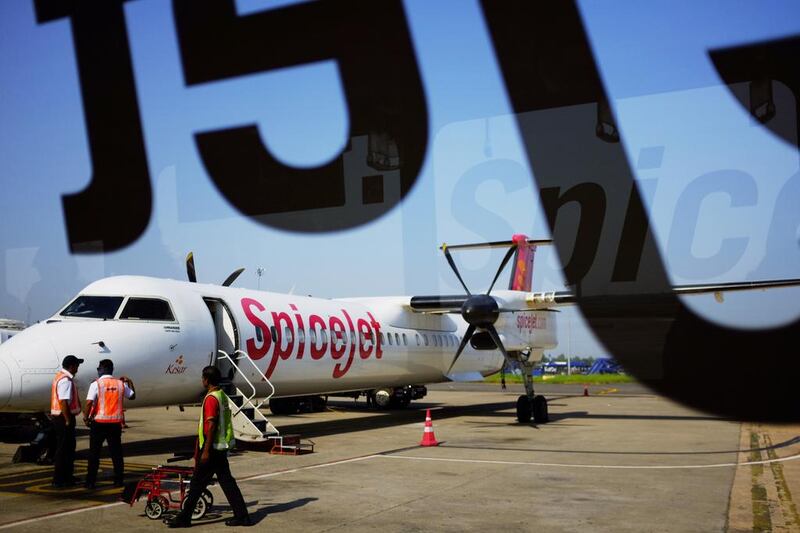MUMBAI // The UAE as a destination is a crucial part of SpiceJet’s expansion strategy, says Ajay Singh, the airline’s chairman and managing director, as it looks to stay profitable just two years after the budget Indian airline was on the brink of collapse.
Mr Singh wants to increase flights from India to Dubai by 50 per cent – to 15 flights a day within a few months from its current 10 daily flights.
“Now there are negotiations going on between the UAE and India to increase some of the flying rights between the two countries and we expect that will happen very soon,” he said. “We already have the landing slots in the airport in Dubai and take-off positions and so on, so as soon as the bilaterals are done we’ll be able to [start the new flights],” he said, adding that the rights should take about two to three months to come through.
The company is planning to launch flights to Sharjah this year, although a date has not yet been fixed, Mr Singh said. Muscat in Oman is another Arabian Gulf destination it plans to start flying to.
“We’ve focused in the Middle East in a significant way,” he said. The company had just four flights into Dubai before he took over in 2015, he said.
“Our focus is really on profitability. We are not in this just to go on increasing market share. India has a lot of unmet demand in certain segments for the Middle East. There are a lot of Indians living and working there and increasingly a large number of Indians who want to visit there for travel and tourism.”
Other airlines are also focusing on meeting the travel demands of Indian passengers. Etihad Airways recently announced plans to launch a third daily flight between Abu Dhabi and Bangalore from next month.
SpiceJet, which has 50 planes, last month unveiled a US$22 billion deal with Boeing for up to 205 planes.
This marks a dramatic turnaround in fortunes from December 2014, when SpiceJet’s fleet was grounded and hundreds of flights were cancelled, as the airline struggled with debts and huge losses. The consensus was that the carrier would go the way of Kingfisher Airlines, which halted operations in 2012 because of its financial woes.
But then Mr Singh, the airline’s co-founder who sold off his stake in 2010, stepped in to save the carrier by buying a majority stake. Since then, the airline’s financial performance has improved substantially.
“We’ve worked hard in the last two years to put things back in shape,” said Mr Singh. The airline has had eight quarters of profit since the change in ownership.
Lower oil prices have also helped the company’s bottom line.
Mr Singh said he “rejigged” the airline’s network to “ensure that we are flying only the more profitable routes”.
It shut down some destinations in India and abroad, including Kathmandu and Guangzhou in China, and changed the timings of some of its flights.
The “threat of an increase in the price of oil” is a major concern for the carrier and the industry at the moment, Mr Singh said.
India has a population of more than 1.2 billion, but only a small proportion of Indians travel by air, so carriers have huge scope for growth in the market as the economy expands, incomes rise and air travel becomes more affordable.
“We expect that there will be great growth in the years to come,” said Mr Singh.
business@thenational.ae
Follow The National's Business section on Twitter





